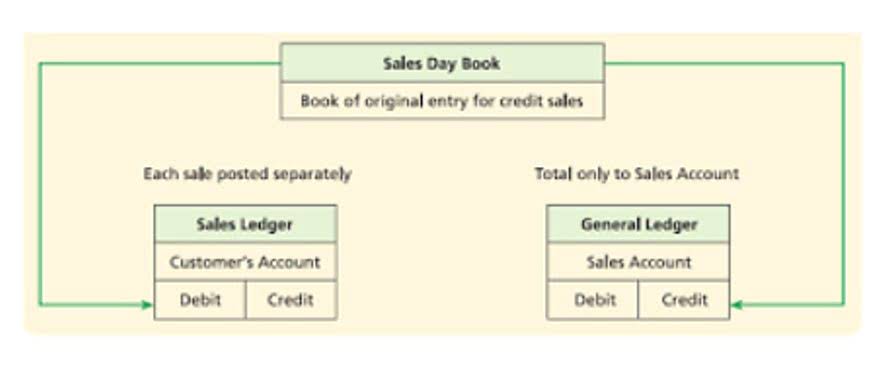A ascensão das criptomoedas trouxe novas oportunidades para os entusiastas do jogo online. No entanto, a natureza volátil deste setor exige que os jogadores adotem uma abordagem cautelosa. Conhecer os riscos é fundamental para garantir uma experiência positiva e segura.
Entre as estratégias que os jogadores podem utilizar, as rodadas grátis se destacam como uma forma de maximizar o entretenimento, mas também podem trazer armadilhas. Um entendimento profundo de como essas ofertas funcionam e os termos associados é vital para evitar armadilhas comuns que podem prejudicar a experiência de jogo.
Estar ciente dos erros mais frequentes permite que os jogadores desfrutem das vantagens do jogo com criptomoedas, mantendo sempre a responsabilidade em mente. Afinal, o prazer em jogar deve vir acompanhado de consciência e controle, priorizando a diversão sobre os riscos financeiros.
Subestimar a Importância do Controle de Orçamento
Um dos erros mais comuns ao lidar com criptomoedas é a subestimação do controle de orçamento. Muitas vezes, jogadores entusiasmados se deixam levar pela emoção das promoções semanais e pela atração do visor móvel, esquecendo que é fundamental estabelecer e seguir um orçamento rígido.
Sem um controle adequado, é fácil perder a noção de quanto se está investindo e, consequentemente, arriscar montantes que não podem ser perdidos. Isso pode levar a decisões impulsivas e a uma cascata de perdas financeiras. A criação de uma tabela de pagamentos e o entendimento das diferentes promoções podem ajudar na gestão financeira e evitar esse tipo de armadilha.
As estratégias de martingale, embora possam parecer atraentes, também requerem cautela. É fundamental não deixar que a expectativa de recuperação de perdas faça com que um jogador ultrapasse seu orçamento designado, criando um ciclo vicioso de dívidas.
Assim, priorizar o controle de orçamento é uma prática indispensável para qualquer um que deseje jogar de forma responsável com criptomoedas. Para mais informações e dicas sobre jogos e promoções, visite https://casimba.site/.
Ignorar os Sinais de Dependência e Compulsão
Engajar-se em apostas de esports pode ser uma atividade emocionante, mas é crucial estar atento aos sinais de dependência e compulsão. A euforia das vitórias e a frustração das perdas podem criar um ciclo difícil de romper.
É fundamental observar comportamentos que podem indicar excesso, como:
- Aumento do tempo dedicado às apostas;
- Desvio de atenção das atividades cotidianas;
- Sentimentos de ansiedade ao não apostar;
- Perdas financeiras que impactam o dia a dia.
Criando consciência sobre esses sinais, os apostadores podem buscar suporte, como o suporte 24/7, que muitas plataformas oferecem. Ter acesso a ajuda em momentos críticos é uma medida eficaz para evitar a degradação da saúde mental.
Além disso, ao utilizar estratégias de martingale, é essencial não deixar que a impulsividade guie suas decisões. Essas estratégias, que inflam as expectativas, podem levar apostadores a continuar jogando mesmo quando os sinais de advertência aparecem.
Providenciar rodadas grátis pode ajudar a manter a diversão e incentivar uma abordagem mais controlada. Porém, aproveitá-las de forma consciente é fundamental para não cair na armadilha de excessos.
Promover um ambiente de apostas responsável implica em estar sempre alerta aos próprios limites e buscar prazer na atividade, sem que ela se torne uma obrigação.
Negligenciar a Diversificação dos Investimentos
A falta de diversificação em investimentos em criptomoedas pode resultar em perdas significativas. Assim como nas apostas em esports betting, onde contar apenas com um time ou jogo pode ser arriscado, concentrar todos os recursos em uma única criptomoeda é uma estratégia arriscada. Essa abordagem aumenta a exposição a flutuações de preço e crises específicas que podem impactar diretamente o retorno do investimento.
A diversificação permite que os investidores distribuam seu capital entre diferentes ativos, reduzindo a volatilidade geral do portfólio. Além disso, aproveitar promoções semanais de exchanges ou plataformas de criptomoedas pode ser uma boa oportunidade para diversificar. Por exemplo, ao investir em projetos emergentes, não apenas se busca aumentar o retorno, mas também se cria uma rede mais segura contra perdas inesperadas.
Outra vantagem é o acesso a oportunidades como pagamentos instantâneos e rodadas grátis, que podem surgir em diferentes tokens ou plataformas. Assim, diversificação não é apenas uma questão de segurança, mas também de aproveitar ao máximo as várias opções disponíveis no mercado. Um portfólio bem diversificado, portanto, pode incluir desde criptomoedas consolidadas até opções emergentes, distribuindo o risco e aumentando as chances de retorno positivo.
Em resumo, ignorar a diversificação pode limitar suas oportunidades no mercado de criptomoedas, tornando seu investimento não apenas arriscado, mas menos lucrativo. Ao criar uma tabela de pagamentos diversificada, você pode garantir que seu potencial de ganho seja maximizado, ao mesmo tempo em que minimiza as consequências negativas de um eventual colapso de ativo.
Confiar Demais em Informações de Fontes Não Confiáveis
Em um cenário repleto de informações sobre criptomoedas, é fácil se deixar levar por promessas de ganhos rápidos e ofertas tentadoras. Muitas vezes, plataformas de esports betting e sites de troca oferecem promoções semanais e bônus de reintegração que podem parecer irresistíveis, mas é fundamental verificar a credibilidade das fontes. A confiança excessiva em anúncios ou dicas de pessoas que não possuem um histórico confiável pode culminar em perdas financeiras.
Um aspecto a ser considerado é a importância de realizar sua própria pesquisa antes de seguir qualquer conselho. Profissionais do setor frequentemente enfatizam que informações sem embasamento podem levar a decisões precipitadas. O uso de visor móvel para acessar dados em tempo real pode auxiliar na obtenção de informações precisas e confiáveis.
Seja cauteloso ao interagir em comunidades online ou fóruns, onde a troca de ideias pode ser valiosa, mas também pode ser fonte de desinformação. Sempre procure por análises feitas por especialistas e opiniões que possam ser corroboradas por fatos. Além disso, plataformas com suporte 24/7 podem garantir que quaisquer dúvidas sejam solucionadas de maneira rápida e com segurança.
Em resumo, cultivar uma mentalidade crítica frente às informações disponíveis e evitar a tentação de confiar cegamente em fontes não verificadas é um passo importante na gestão de banca e na proteção de seus investimentos em criptomoedas.
Perguntas e respostas:
Quais são os erros mais comuns que os jogadores cometem ao usar criptomoedas?
Um dos erros mais comuns é não pesquisar adequadamente sobre a criptomoeda antes de fazer qualquer investimento ou transação. Muitas vezes, as pessoas se deixam levar por boatos ou recomendações de amigos. Outro erro frequente é não usar métodos de segurança, como autenticação de dois fatores e carteiras seguras, o que pode resultar em perdas financeiras. Além disso, muitos jogadores não definem um orçamento claro e acabam gastando mais do que planejavam, o que pode afetar sua situação financeira. A falta de entendimento sobre a volatilidade do mercado de criptomoedas também é um erro sério, pois pode levar a decisões impulsivas.
Como posso proteger meus investimentos em criptomoedas durante o jogo?
Para proteger seus investimentos, é importante usar carteiras confiáveis e manter suas chaves privadas em segurança. Ademais, considere diversificar seus ativos em diferentes criptomoedas para não concentrar riscos em um único investimento. Mantenha-se informado sobre o mercado e evite realizar transações em momentos de alta volatilidade, pois isso pode levar a perdas. Definir limites de gastos e seguir uma estratégia de investimento bem planejada também são passos importantes para a proteção dos seus investimentos.
Qual é a importância de entender a volatilidade do mercado de criptomoedas?
A volatilidade do mercado de criptomoedas é significativa porque ela pode afetar drasticamente o valor dos ativos em curtos períodos de tempo. Compreender isso auxilia os investidores a tomar decisões informadas, evitando reações impulsivas que podem resultar em grandes perdas. Por exemplo, um jogador que não percebe que uma criptomoeda específica pode perder rapidamente valor durante um evento de mercado pode acabar vendendo em um momento ruim. Portanto, estar ciente da volatilidade permite uma abordagem mais estratégica e calculada no investimento.
Quais práticas de jogo responsável devem ser adotadas por quem investe em criptomoedas?
Quem investe em criptomoedas deve adotar práticas de jogo responsável, como definir um limite de gastos que não comprometa a saúde financeira. Além disso, é fundamental fazer pausas regulares e não se deixar levar pela emoção, evitando decisões apressadas. Documentar suas transações e acompanhar o desempenho dos investimentos também é aconselhável. Estar atento aos sinais de alerta de comportamento de jogo compulsivo e buscar ajuda, se necessário, são passos adicionais que podem contribuir para uma experiência de investimento mais saudável.
Quais são os riscos associados ao uso de criptomoedas no jogo online?
Os riscos incluem a possibilidade de perda financeira devido à volatilidade extrema das criptomoedas, fraudes e golpes em plataformas não regulamentadas. Além disso, a regulamentação do uso de criptomoedas varia entre os países, o que pode trazer complicações legais para os jogadores. Outro risco é o uso inadequado de carteiras digitais, o que pode resultar em hackers acessando suas contas. É importante que os jogadores façam suas pesquisas e escolham plataformas seguras e respeitáveis para minimizar esses riscos.
Quais são os principais erros que os investidores cometem ao lidar com criptomoedas?
Um dos principais erros que muitos investidores cometem ao negociar criptomoedas é não realizar uma pesquisa adequada antes de investir. É comum que novidades e promessas atrativas levem as pessoas a investir sem entender o projeto por trás da criptomoeda. Outro erro frequente é a falta de diversificação. Colocar todos os recursos em uma única moeda pode resultar em perdas significativas caso essa moeda enfrente dificuldades. Além disso, muitos investidores tendem a agir por emoção, especialmente em momentos de alta volatilidade, o que pode levar a decisões apressadas e prejuízos. O uso de estratégias de gerenciamento de risco e a manutenção de uma visão de longo prazo são fundamentais para evitar esses erros.
Como posso me proteger contra perdas grandes ao investir em criptomoedas?
Proteger-se contra perdas ao investir em criptomoedas envolve diversas práticas. Em primeiro lugar, é recomendável estabelecer limites de investimento, como nunca arriscar mais do que uma porcentagem específica do seu capital total em um único ativo. O uso de ordens de stop-loss pode ajudar a minimizar perdas, permitindo que você venda automaticamente seus ativos quando eles alcançam um preço específico. Além disso, a diversificação do portfólio, distribuindo investimentos entre diferentes criptomoedas e ativos, pode reduzir o impacto de uma perda em um único ativo. A educação contínua sobre o mercado e as tendências de criptomoedas também é essencial para tomar decisões informadas. Por fim, manter as criptomoedas em carteiras seguras pode proteger seus ativos de possíveis roubos ou fraudes.















